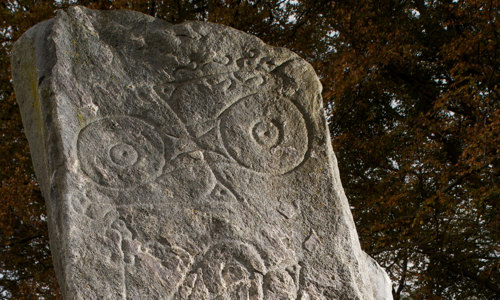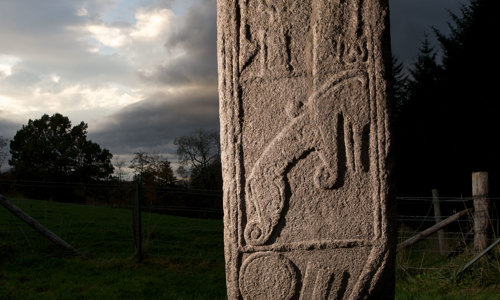History
A great Pictish fort
Burghead Well stands in the north-eastern corner of what was once a great Pictish fort. Three huge ramparts and ditches cut off the headland heading into the Moray Firth. Behind them lay an inner fort, dating to about AD 500. Burghead may have served as a Pictish navy base, but it was destroyed by fire in the 800s.
Burghead Well stood in the annexe on the line of the ramparts of the fort.
Remnants of the fort were mostly destroyed in 1808, when the planned town of Burghead was built.
What’s down the well?
In 1809, the ‘well’ was excavated to serve as a water supply for the planned town. Inside the green hollow, workers discovered:
- a 5m square, 4m high chamber
- a 3m square cistern
- a flight of steps leading down, cut from solid rock
The cistern had a free-standing stone pedestal in one corner, and a basin cut into another. The cistern was deepened using explosives to increase its water capacity, and the entrance arch and roof chamber were built.
When the well was cleared out, several finds were made:
- a stone slab with a carved bull
- Spanish coins
- a bell metal jug
- a stone square with cross and knot carvings
There’ve been a few theories regarding the well’s function. It may have been the water supply of the Pictish fort, but its monumental character makes it ill-suited to utilitarian function. Perhaps the most plausible theory is that Burghead Well was once a Pictish cult centre, which was later converted to Christian use.















